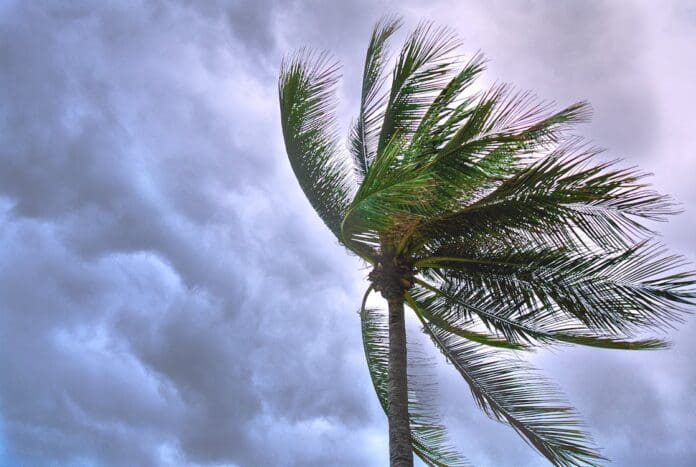As storm season approaches, the potential for power outages, property damage, and disruptions to daily life looms large. But fear not, homeowners. By taking proactive steps, you can transform your home into a haven of preparedness.
This article equips you with crucial advice to boost your readiness and ensure your comfort and safety throughout the storm season.
1. Generator Maintenance is Key
The last thing you want during a storm is to discover your backup generator isn’t functioning. Preventative measures are key. Schedule a professional generator repair and maintenance service well before the storm season arrives.
This thorough inspection will identify any potential problems and ensure your generator is in optimal working order. Think of it as giving your generator a tune-up. Technicians will check oil levels, spark plugs, filters, and overall functionality.
According to Colorado Standby, addressing these issues proactively minimizes the risk of unexpected breakdowns during a power outage. While some basic troubleshooting skills are helpful, for repairs beyond your comfort level, enlist the help of a qualified professional. Their expertise ensures your generator is functioning safely and efficiently, providing reliable backup power when you need it most.
2. Assemble an Emergency Kit
A well-stocked emergency kit serves as your lifeline during unexpected situations, including power outages caused by storms.
According to HowStuffWorks, essential items should include a gallon of water per person per day for drinking and sanitation. Non-perishable food that doesn’t require cooking is crucial, along with a battery-powered or hand-cranked radio to stay informed.
A first-aid kit ensures you can address minor injuries, while flashlights or camp lights provide illumination during power outages. Don’t forget blankets or sleeping bags for warmth, along with sanitary items, utensils, and even some games to keep everyone entertained.
Remember, accessibility is key. Store your kit in a cool, dry place in water-tight containers to protect supplies from damage. Consider including a waterproof container for important documents like insurance papers and identification. These documents will be invaluable if you need to evacuate your home.
3. Secure Your Property
The NOAA National Centers for Environmental Information (NCEI) reported a historic year in 2023 for costly weather and climate disasters, totaling at least $92.9 billion. With a record-breaking number of 28 disasters, it’s evident that being proactive in securing your property can mitigate potential damages and financial losses.
Start by inspecting your surroundings for loose objects that could become projectiles in high winds. Secure outdoor furniture, grills, and decorations to prevent them from causing damage or injury. Additionally, trim tree branches that could break and potentially damage your house or power lines during a storm.
4. Stay Informed and Have a Communication Plan
Staying informed and having a communication plan is vital during storm season to ensure the safety and well-being of your family. Monitor weather forecasts closely and heed storm warnings issued by local authorities to stay prepared for impending weather events.
Additionally, having a communication plan in place can help coordinate efforts and maintain contact with family members.
WGCU emphasizes the importance of making a family communication plan. This plan ensures everyone in your family knows how to reach each other in case of power outages or phone line disruptions.
Here’s a key strategy: choose a designated contact person outside your region for each family member. This person is more likely to have functioning phone lines and can serve as a central point of contact during a crisis. Program this contact’s information as an “In Case of Emergency” (ICE) entry in everyone’s phone. Emergency responders often check ICE listings to reach loved ones during urgent situations.
Confirm that everyone in your family has the designated contact’s phone number, email address, and ideally, a cell phone. Texting is highly recommended during storms. Texts don’t tie up phone lines and can often work even when phone calls fail due to network overload.
Keep a copy of your family contact information and a designated meeting location in a safe and easily accessible place. A designated contact person outside your region should also be communicated to relatives and friends who live out of town.
5. Familiarize Yourself With Evacuation Routes and Shelter Options
While staying put might be the ideal scenario, storms can sometimes necessitate evacuation for your safety. To ensure a smooth and swift exit, familiarize yourself with evacuation routes designated by your local authorities well before a storm strikes. These routes are typically chosen to avoid congested areas and minimize travel time during an emergency.
Having an evacuation plan in place is crucial. This plan should include your designated evacuation route, along with a predetermined meeting location for your family in case you get separated.
Consider your transportation options. Will you be using your vehicle, or will you rely on public transportation provided during emergencies? If you plan to drive yourself, factor this into your plan and ensure your vehicle is in good working order.
Think about potential accommodation needs. Research designated shelters in your area and consider alternative options like staying with friends or family outside the storm’s path. Having a backup plan ensures you have a safe place to stay if shelters become overcrowded.
Frequently Asked Questions
Why is it important to be prepared if there is a storm?
Being prepared for a storm is crucial to ensure the safety and well-being of individuals and property. Adequate preparation allows for timely response to emergencies. It minimizes risks of injury or damage and facilitates effective communication and coordination with family members and emergency services.
What are the preventive measures of storms?
Preventive measures during storms include seeking shelter in sturdy enclosed buildings or hard-top automobiles if caught outside. Avoid open spaces, metallic objects, and high ground. Exit boats and stay away from bodies of water. Remember, hearing thunder indicates proximity to lightning and the risk of being struck.
How to protect your house from thunderstorms?
To protect your house from thunderstorms, install well-grounded lightning masts or shield wires above your home. Avoid being the tallest structure around. Use a whole-house surge protector on incoming power and communication lines to safeguard against lightning strikes and electrical surges.
In conclusion, storm season may bring uncertainty, but with careful preparation, you can transform your home into a haven of comfort and safety. This article has equipped you with crucial advice to boost your preparedness. Remember, staying informed about weather forecasts and having a communication plan with your family are vital during storms.
Furthermore, familiarizing yourself with evacuation routes and designated shelters allows you to react swiftly and decisively if necessary. Go forth, prepare wisely, and weather any storm that may come your way!








